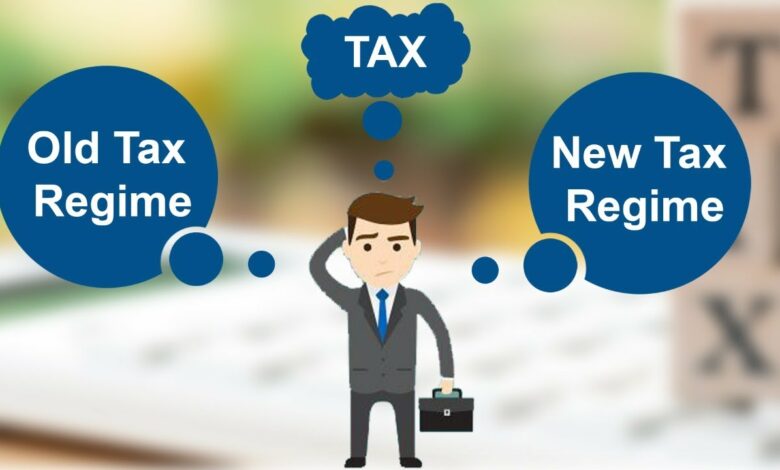
When choosing between the old income tax regime and the new tax regime provided by the budget, it could get a little difficult to choose between the two, keeping in mind the varied exemptions and deductions. Moreover, the lower tax rates in the new tax regime and its ideation should translate into lesser taxes. But is it really the case for all?
Not really! The reason behind this is that if following the new regime, you will have to forgo most tax breaks, these include key deductions like:
- Section 80C (expenses, investments, and life insurance premium of up to ₹1.5 lakh)
- Section 80D (health insurance premiums of up to ₹25,000 for people under 60 and ₹50,000 for senior citizens)
- Section 24 (interest on a home loan of up to ₹2 lakh)
- Section 80CCD (extra National Pension Scheme of up to ₹50,000)
- Section 80E (education loan interest)
- Section 16 (standard deduction on salary income of ₹50,000)
Adding to that, the user will also have to look into the benefits of most exemptions under Section 10, such as the house rent allowance and leave travel concession. At the time of switching between the two, you will need to take into account the impact of these tax breaks on the final tax liability.
So, Should the Switch Be Made From the Old to the New Tax Regime?
To help you decide between the new income tax regime and the old one, you must read through the context below to understand with an example:
First and foremost, you must know about the break-even amount of exemptions and deductions, where the tax liability would be the same under both, the old regime and the new income tax regime.

To do this, make a list and calculate the deductions and exemptions that you’ve planned to use. In case the total exceeds the break-even amount, it’s recommended to stick with the old regime. On the other hand, if the total is less as compared to the break-even, you could consider shifting to the new tax regime.
Here’s an example to help you understand the exemptions and deductions in both scenarios:
Rita is younger than 60 years old and holds an annual gross income of ₹15 lakh. Here, if the exemptions and deductions that are claimed by her make a total of ₹2.5 lakh a year, then the taxable income as of the old regime becomes ₹12.5 lakh with a tax liability of ₹1.95 lakh.
However, as for the new tax regime (in absence of these benefits of deductions and exemptions), her taxable income becomes ₹15 lakh. Nevertheless, all thanks to the lower tax rates, the tax liability stays at ₹1.95 lakh.
There are no break-even levels of tax benefits if Rita decides to opt for the new regime or the old one.
Having said that, if Rita’s tax breaks exceed the amount of ₹3 lakh, then the taxable income under the old regime will get down to ₹12 lakh with tax liability at ₹1,79,400. Whereas, under the new regime, the liability would be ₹1.95 lakh. In this case, it’s rather better for her to continue with the old regime.
If at all the tax liability has to break below ₹2 lakh, then the taxable income under the old regime becomes ₹13 lakh with a liability of ₹2,10,600, that is, higher than the tax liability of ₹1.95 lakh as of the new regime. Here, the shift from the existing tax regime to the new one would be beneficial for Rita.

Using An Income Tax Calculator To Understand The Switch
An income tax calculator is another way to determine the switch and know if it’s beneficial. It not only helps calculate income tax returns but also helps you gauge the impact of both the tax structures on your income.
The Flexibility Between the New And Old Tax Regime
It’s completely ok to stick to the old regime at the time of filing and make the shift to the new income tax regime in future years, that is only if it is beneficial. Also, if you hold no business income, it’s easier to make the choice between the two each year.
Having said that, if you do and you’ve shifted to the new regime, you would be expected to continue with it in the future too.
To Conclude: The New Tax Regime
The new income tax regime is available to individuals and HUFs, although optional, it is payable at lower slab rates on the income of up to 15 lakhs as compared to the old regime.
If and when opting for the new tax regime, you will have to forgo multiple tax exemptions and deductions. Under the new tax regime, the salaried people won’t be able to avail benefits like:
- Standard deduction
- House Rent Allowance (HRA)
- Leave Travel Assistance (LTA)
Salaried and self-employed:
- Under Section 80 C (various items like EPF, LIP, School Fee, PPF, NSC, ELSS, home loan repayment, etc.)
- 80D (for health insurance premiums)
- 80 CCD(1)
- 80 CCD(1B) for NPS
Retired senior citizen:
- Cannot claim standard deduction against pension in respect of their past employment
- Deduction of 50,000 to a senior citizen for interest from the post office and banks is also not available

FAQs: Should I Switch To New Tax Regime? Income Tax Calculator and More!
1) Is it better to switch to a new tax regime?
If you are a taxpayer with lower exemptions and deductions than the breakeven, then you must opt for the new taxation regime since they offer lower tax rates.
2) Can I choose between the new and old tax regimes every year?
Only a salaried taxpayer can opt-in and opt-out every year from the new and old income tax regime.
3) When should I opt for a new tax regime?
If you have a business income, you must submit the form before the due date of filing. As for the salaried individuals, the form can be submitted before/at the time of ITR filing.




